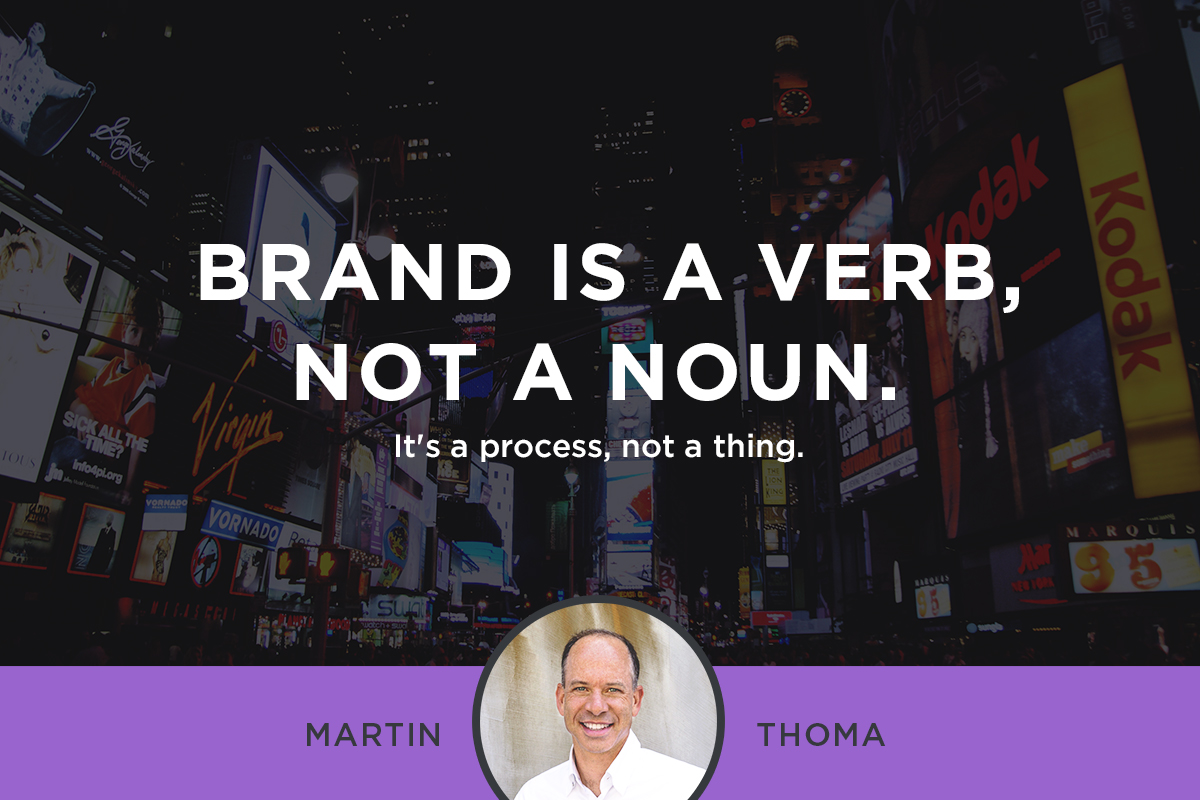When a word means something different to every person who uses it, the word essentially means nothing at all. That’s the plight of “brand” and “branding” these days.
Hillary Clinton is now a “brand.” (Her campaign has even hired some experienced brand managers from the advertising and packaged goods industries to consult.) Wheaties is a cereal brand, the breakfast of champions. You can now be considered your own “personal brand.”
I’ve had prospective clients tell me, “We already have a brand, so we don’t need any branding. We just want to drive leads into our sales organization.” Others have told me, “We need to do branding,” meaning they wanted to develop a brand image advertising campaign to express their position in a category.
Once when we updated a client’s logo, they spoke of their company’s “rebranding.” Other clients have spoken of their ambition to “make our brand a household name.”
All of which incites me to argue that we should just dispense with “brand” as a noun and engage with it as a verb. Brand is a process, not a thing. Brand is a journey, not a destination.
Sure, the dictionary disagrees with this point of view. It states plainly that the word is both noun and verb, depending on the context. But please, humor me long enough to consider using “brand” only as a verb. Here’s my rationale:
A brand is a journey
A brand is never static; it is never complete. Think about Twitter — its reputation, utility and relevance continue to change quite rapidly. What started as an oddball fad, constrained by the length of 140 characters per post, has evolved into the foundation of a weird and wonderful online ecosystem. A diverse collection of apps and implementations enabled by Twitter’s extraordinarily open API makes the platform an information utility pervading every corner of the Internet. What started as a way to share what you were eating for dinner is now a platform that serves up breaking news more freely and frequently than the New York Times or Washington Post.
As Twitter has evolved, its leadership has experienced the thrill and terror of standing on the deck of a ship pitching and plunging forward through heavy seas. The captain of that ship is charged with continually correcting course, trimming sails and steering up and down the faces of big waves. The captain of your brand is no different, regardless of how calm or confused the seas may be.
Learn how to build a brand your team can follow.
A brand is not a thing, it is a journey. As such, it will benefit from a navigational system, a compass that points to its “true north,” and a map of where it is trying to go in the world.[Tweet “A brand is a conversation with the marketplace. A brand is activity, not stasis.”]
A brand is a conversation
Think about a brand as a conversation with your customers. A conversation is a fluid dialogue; the backing-and-forthing between two parties continually shapes and reshapes the dialogue itself.
There is no way to dictate where a conversation will go, how it will end or what will come of it. You might have in mind a certain outcome and steer the dialogue in that direction, but to prevail you’ll have to use influence, persuasion, argument and charm. Even then there’s no guarantee of success, just like building and leading a brand.
For more help on how to build your brand strategy, check out this post.
Think about Walmart in the early 2000’s. Through aggressive pursuit of the absolute lowest retail prices, the retailer’s supply network sent more and more production to China. An unintended consequence was a measurable contribution to the U.S. trade deficit, domestic factory closures and job losses and industry-wide influence as other retailers and suppliers chased the Walmart juggernaut to China. Meanwhile, Walmart kept holding costs down by managing workforce hours and employee benefits.
Walmart came under withering fire from labor unions and others; at one point, the CEO even admitted that most of his job had become “public relations.”
What is Walmart today? A company leading the charge to increase its employees’ pay to a minimum standard. A company that is speaking out assertively on public policy, economic development and human rights. A company not shy about taking a stand on controversial issues. A company leading the retail industry in driving more sustainability into the supply chain. A company clear that helping people “live better” is more nuanced than driving the cost of a roll of toilet paper to the lowest possible mark.
Walmart knows how to listen. And it’s clearly become more adept at dancing with the many and varied parties that influence and shape the Walmart brand.
A brand is a conversation with the marketplace. A brand is activity, not stasis. How are you leading in the journey or conversation that is your brand?
For more guidance on how to brand your company, check out our five success principles for internal branding.
This article originally appeared in Talk Business.

